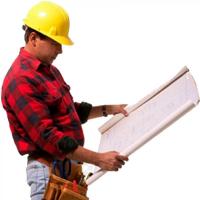How to Protect Your Home from Carbon Monoxide
by Katherine Watkins on Nov 1, 2011
Colorless and odorless, carbon monoxide is a gas produced through the incomplete burning of organic substances, including fuels. An estimated 500 deaths are attributed to carbon monoxide poisoning in US homes each year, and as many as 15,000 people a year are treated or examined for ill effects caused by it, including flu-like symptoms, headaches, fatigue, and nausea. Thankfully, there are some relatively simple ways to avoid carbon monoxide poisoning in your home.
Know the sources
Being aware of where carbon monoxide comes from is the first step to protecting your home and family from its dangers. Furnaces, water heaters, space heaters, gas cooking stoves, clothes dryers, and fireplaces can all be sources of increased carbon monoxide in a home.
Protect your home
Several simple steps can be taken to help protect loved ones from possible carbon monoxide poisoning.
- Use a professional – Have the home’s heating system and water heater inspected on an annual basis by a qualified technician. Repair any leaks immediately. The furnace should have an adequate intake of outside air. If a fireplace is used, check the vents and clear them of any debris.
- Certificates – If you live in rented accommodation, ask to see the landlord's gas safety certificate, which will show that appliances have been inspected by a professional technician and are in safe working order.
- Heating – When using kerosene space heaters, make sure the room in which they operate is well ventilated and always use the recommended type of fuel. Never use a gas range to heat a room. When making repairs to vent pipes, avoid using a makeshift patch to fix leaks as this can lead to an accumulation of carbon monoxide levels.
- Garages – Avoid running a car or other motorized engines inside a garage that is connected to the house. If the engine must be run, be sure to open the outside door and close the door connecting the house to the garage.
- Know the signs – Some physical signs may indicate a fuel-burning appliance is not in proper working order. Look for streaks of soot around the appliance, excess moisture found on windows, walls or other cold surfaces, and smoky smells. The flames in a combustion appliance should always be blue, so another danger sign is if they burn orange or yellow.
- Install detectors – Carbon monoxide alarms detect when excess levels of carbon monoxide are in the air and sound a warning. All detectors should be certified by a nationally recognized testing laboratory and the manufacturer’s instructions for placement must be followed. Some states require carbon monoxide detectors to be placed within so many feet of every room legally used for sleeping. At a minimum, it is recommended to have one detector on every floor in which a room is used for sleeping.
Carbon monoxide is known as the silent killer because elevated levels of this gas may be in a home long before anyone knows it. That is why it is so important to make sure combustion appliances are in proper working order and they should be inspected every year. With just a few precautions, accidents can be easily avoided.
Popular Articles
Three Places to Spend Money on the Exterior of Your Home
When you have the exterior of your home remodeled, you are investing, time, energy and convenience into the project and you want to make sure that...
104882 Views
Homemade Headboards-Make an Upholstered or Wooden Headboard
Homemade headboards can add a lot of personality to any bedroom. They can be coordinated with existing furniture and room decor or they can be the...
80124 Views
When to Use a Brush, Roller or Sponge Brush
Brushes are a good choice for painting trim and woodwork. They are also useful for cutting in the edges around the top and bottom edges and corners...
72791 Views
Creating a Cottage Kitchen with Bead Board
Kitchen decor can range from modern and bold to elegant and elaborate by using strategic kitchen pieces. One of the most popular decorating trends...
58555 Views
Gas Fireplace Diagnostics and Troubleshooting
Follow these steps for diagnosing and troubleshooting Gas Fireplaces repairs. For the average DIYer, this may seem intimidating, depending on the...
35592 Views
Latest Articles
How Much Does it Cost to Take a Bath?
Plumbers know that a bath may seem like a relaxing luxury, but the real cost extends far beyond your water bill. The average soak uses 35 to 50...
on Apr 8, 2025
10 Concrete Patio Ideas on a Budget
A concrete patio can be a game-changer for your outdoor space. It is durable, versatile, and can be customized to fit your style. But what if you...
on Mar 25, 2025
Tips for Creating a Stunning Personalized Photo on Canvas
Order the unique beauty of a personalized photo on canvas and bring your memories to life. With a customized photo on canvas, you can transform...
on Mar 7, 2025
Best Areas to Buy Property in Singapore for Long-Term Growth
Singapore's real estate market remains one of the most stable and lucrative in the world. With limited land supply, strong governmental...
on Feb 18, 2025
Troubleshooting Excess Water in Your HVAC Secondary Condensate Drain Pan
When maintaining your air conditioning system, it is easy to overlook the condensate drain pan - until excess water starts pooling in places where...
on Jan 12, 2025
Featured Articles
What Type of Licensed Contractor Should You Hire?
on Feb 28, 2017
Hire Contractors / Estimates

Looking for a specialty project? There are many types of contractors available for your home improvement needs. Finding the right type of...
Sponsored Articles
Best Areas to Buy Property in Singapore for Long-Term Growth
on Feb 18, 2025
Real Estate / Finance

Singapore's real estate market remains one of the most stable and lucrative in the world. With limited land supply, strong governmental...
Actions
Top Categories
- Garden / Landscaping / Patio — 264
- Kitchen / Bathrooms — 240
- Real Estate / Finance — 203
- Appliance / Repair — 186
- Interior Design / Decor — 184
- HVAC / Air Conditioning — 148
- Cleaning / Maintenance — 144
- Improvements / Remodeling — 131
- Plumbing / Basements — 118
- Floors / Tile / Hardwood — 116
- Doors / Garages — 113
- Safety / Security — 113
Articles Archive
More DIY Articles
Fingerprint Door Locks Offer Convenience, Extra Security
Home and office security are extremely important in todays world, and many homes and business owners are looking for foolproof ways to keep their...
9 Cool Ideas for Wall Art with Wood Prints
Make your houses feel like home. The interior of your home reflects your personal style. To make some influential changes and get a relaxing mood,...
6 Things You Need to Know About Unfinished Kitchen Cabinets
If you want to get a custom look in your kitchen, you can do it affordably by purchasing unfinished kitchen cabinets. These types of cabinets come...
How to Restore Chipped Furniture
Wooden furniture may be chipped while in the process of moving or as a result of extensive use. Furniture brought home from garage sales or used...
What Shower Curtains are Often Made with Vinyl
A curtain can’t just be taken lightly. You have to see what it’s made out of so you can find something that is not only beautiful but also easy to...

